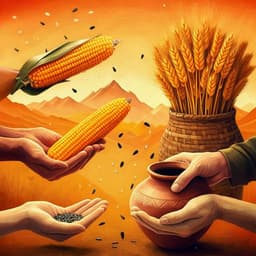
Sociology
Cultural, economic, and symbolic value of the enset crop in Sebat-Bet Guraghe, Southwest Ethiopia: a qualitative study
H. Wondimu and A. Kebede
This qualitative study explores the profound economic, cultural, and symbolic significance of the enset crop for the Gurage people of Southwest Ethiopia, showcasing its vital role in wealth, social connections, and representations of femininity. Conducted by Habtamu Wondimu and Ashenafi Kebede, the research highlights the need for further studies on enset's medicinal properties.
~3 min • Beginner • English
Related Publications
Explore these studies to deepen your understanding of the subject.







